Do you have a question about the Panasonic NN-CS88LB and is the answer not in the manual?
Child supervision requirements and risks of heating sealed containers.
Handling door seals, repairs, cords, plugs, and water tanks safely.
Caution about boiling hot steam and potential injury when opening the door.
Warnings about steam, fire procedures, and handling low-moisture foods.
Precautions for heating liquids, paper, plastic, metal, foil, and bottles/jars.
Continued safety advice on oven placement, heating liquids, and handling hot surfaces.
Further safety points on liquid heating, eggs, cleaning, and commercial oven cleaners.
Safety warnings regarding oven surface temperatures, steam, and prohibited operations.
Notes on oven components, heating elements, and drip tray usage.
Unpack, check for damage, and ensure proper earthing for safety.
Use correct voltage and follow placement guidelines for optimal operation.
Initial burn-off, hot surfaces, internal components, and proper usage rules.
Warnings about hot accessories, exceeding cooking times, and thermometer use.
Safety tips for small food quantities, eggs, and piercing food skins.
Precautions for heating liquids, paper, and plastic containers.
Warnings on using metal, foil, and sealed bottles/jars.
Guidelines for using enamel and wire shelves in specific cooking modes and weight limits.
How to use glass trays, wire racks, and a chart for mode compatibility.
Identification of oven parts like door handle, window, elements, and shelf positions.
Identification of control panel, drip tray, water tank, and air vents.
How to fit, remove, clean, and re-position the drip tray.
Explanation of the display window and control panel buttons for various functions.
Explains beep sounds and the oven's energy saving function.
Details on microwave mode uses, accessories, and containers.
Grill settings, preheating, time, and accessory usage.
Convection temperatures, accessory use for 1 and 2 levels, and operation steps.
Uses, accessories, and operation for Steam + Microwave, Grill, Convection.
Uses, accessories, and operation for Grill/Convection + Microwave and Grill + Convection.
How the oven guides users through operation using text prompts.
How to select time, weight, or auto menu numbers using navigation buttons.
Step-by-step guide to setting the oven's clock time.
Instructions for activating and deactivating the child lock feature.
Details on microwave power levels, wattages, and dishware usage.
Notes on defrosting, multi-stage cooking, and bottom feeding technology.
How to select grill power, preheat, set time, and use grilling accessories.
Accessory placement and precautions for grilling.
Temperature ranges, quick selection, and accessory use for convection.
Steps for setting convection temperature, preheating, and cooking time.
How to select steam settings, time, and use accessories for steaming.
Notes on water tank, maximum cooking time, and refilling.
Using steam with microwave, grill, or convection modes.
Steps for selecting levels, time, and starting steam combination programs.
How combination cooking speeds up cooking and improves browning/crispness.
Steps for selecting levels, time, and starting combination programs.
How to program the oven for delayed start cooking using the timer.
How to program stand time or use as a minute timer.
How the sensor automatically adjusts power and time for reheating based on food humidity.
Instructions for reheating chilled and frozen meals using sensor programs.
How to defrost food by weight using the turbo defrost feature.
Details on specific turbo defrost programs for different food types and weights.
Instructions for reheating tea, coffee, milk, and hot chocolate.
Programs for reheating, browning, and crisping bread products.
Instructions for cooking chicken and beef (rare, medium) using auto cook.
Instructions for cooking beef well done and baking yeast dough cake.
Instructions for cooking quiche and making yogurt using auto cook.
Programs for bread dough, melting butter/chocolate, and cooking pizza.
Instructions for cooking mug cakes (chocolate brownie or lemon).
General notes on junior menu programs, including preparation and operation.
Programs for cooking pasta bake and reheating frozen potato products.
Programs for preparing vegetable fries and cooking vegetables for purées.
Program for cooking fruit for purées for babies.
Notes on using auto weight programs, accessories, and food variations.
How to adjust auto sensor programs for preferred cooking degree.
Notes on automatic calculation, door opening, temperature, and weight ranges.
Programs for reheating quiche and cooking baked potatoes.
Program to clean pipes by pumping water into the drip tray.
Program using citric acid to clean the system and rinse pipes.
Program for eliminating odours from the oven cavity.
Program for removing fat or grease build-up in the oven cavity.
Instructions for cleaning the removable water tank and its components.
Guidance on removing and refitting the rubber seal for cleaning.
Notes on using auto steam programs, weight ranges, accessories, and food variations.
Instructions for steaming fresh and frozen vegetables in 1 or 2 levels.
Instructions for steaming potatoes in 1 or 2 levels.
Program for steaming fish fillets and green vegetables simultaneously.
Program for steaming whole fish and green vegetables together.
Program for steaming skinless chicken breasts.
Program for steaming frozen salmon and broccoli together.
Troubleshooting oven power, TV interference, program rejection, and vent air.
Explains 'HOT' display, thermometer use, combination mode noises, and odour/smoke causes.
Information about error codes related to the microwave generation system.
Troubleshooting fan rotation, checking temperature, 'D' display, and word prompt.
Steps for unresponsive controls and issues with steam/combination cooking.
Instructions for cleaning the oven interior, door glass, exterior, and control panel.
Notes on steam accumulation, air vents, servicing, and maintaining cleanliness.
Manufacturer, model, power supply, frequency, input/output power ratings.
Physical dimensions, weight, noise level, and EMC compliance.
Information about the manufacturer, importer, and product compliance standards.
Child supervision requirements and risks of heating sealed containers.
Handling door seals, repairs, cords, plugs, and water tanks safely.
Caution about boiling hot steam and potential injury when opening the door.
Warnings about steam, fire procedures, and handling low-moisture foods.
Precautions for heating liquids, paper, plastic, metal, foil, and bottles/jars.
Continued safety advice on oven placement, heating liquids, and handling hot surfaces.
Further safety points on liquid heating, eggs, cleaning, and commercial oven cleaners.
Safety warnings regarding oven surface temperatures, steam, and prohibited operations.
Notes on oven components, heating elements, and drip tray usage.
Unpack, check for damage, and ensure proper earthing for safety.
Use correct voltage and follow placement guidelines for optimal operation.
Initial burn-off, hot surfaces, internal components, and proper usage rules.
Warnings about hot accessories, exceeding cooking times, and thermometer use.
Safety tips for small food quantities, eggs, and piercing food skins.
Precautions for heating liquids, paper, and plastic containers.
Warnings on using metal, foil, and sealed bottles/jars.
Guidelines for using enamel and wire shelves in specific cooking modes and weight limits.
How to use glass trays, wire racks, and a chart for mode compatibility.
Identification of oven parts like door handle, window, elements, and shelf positions.
Identification of control panel, drip tray, water tank, and air vents.
How to fit, remove, clean, and re-position the drip tray.
Explanation of the display window and control panel buttons for various functions.
Explains beep sounds and the oven's energy saving function.
Details on microwave mode uses, accessories, and containers.
Grill settings, preheating, time, and accessory usage.
Convection temperatures, accessory use for 1 and 2 levels, and operation steps.
Uses, accessories, and operation for Steam + Microwave, Grill, Convection.
Uses, accessories, and operation for Grill/Convection + Microwave and Grill + Convection.
How the oven guides users through operation using text prompts.
How to select time, weight, or auto menu numbers using navigation buttons.
Step-by-step guide to setting the oven's clock time.
Instructions for activating and deactivating the child lock feature.
Details on microwave power levels, wattages, and dishware usage.
Notes on defrosting, multi-stage cooking, and bottom feeding technology.
How to select grill power, preheat, set time, and use grilling accessories.
Accessory placement and precautions for grilling.
Temperature ranges, quick selection, and accessory use for convection.
Steps for setting convection temperature, preheating, and cooking time.
How to select steam settings, time, and use accessories for steaming.
Notes on water tank, maximum cooking time, and refilling.
Using steam with microwave, grill, or convection modes.
Steps for selecting levels, time, and starting steam combination programs.
How combination cooking speeds up cooking and improves browning/crispness.
Steps for selecting levels, time, and starting combination programs.
How to program the oven for delayed start cooking using the timer.
How to program stand time or use as a minute timer.
How the sensor automatically adjusts power and time for reheating based on food humidity.
Instructions for reheating chilled and frozen meals using sensor programs.
How to defrost food by weight using the turbo defrost feature.
Details on specific turbo defrost programs for different food types and weights.
Instructions for reheating tea, coffee, milk, and hot chocolate.
Programs for reheating, browning, and crisping bread products.
Instructions for cooking chicken and beef (rare, medium) using auto cook.
Instructions for cooking beef well done and baking yeast dough cake.
Instructions for cooking quiche and making yogurt using auto cook.
Programs for bread dough, melting butter/chocolate, and cooking pizza.
Instructions for cooking mug cakes (chocolate brownie or lemon).
General notes on junior menu programs, including preparation and operation.
Programs for cooking pasta bake and reheating frozen potato products.
Programs for preparing vegetable fries and cooking vegetables for purées.
Program for cooking fruit for purées for babies.
Notes on using auto weight programs, accessories, and food variations.
How to adjust auto sensor programs for preferred cooking degree.
Notes on automatic calculation, door opening, temperature, and weight ranges.
Programs for reheating quiche and cooking baked potatoes.
Program to clean pipes by pumping water into the drip tray.
Program using citric acid to clean the system and rinse pipes.
Program for eliminating odours from the oven cavity.
Program for removing fat or grease build-up in the oven cavity.
Instructions for cleaning the removable water tank and its components.
Guidance on removing and refitting the rubber seal for cleaning.
Notes on using auto steam programs, weight ranges, accessories, and food variations.
Instructions for steaming fresh and frozen vegetables in 1 or 2 levels.
Instructions for steaming potatoes in 1 or 2 levels.
Program for steaming fish fillets and green vegetables simultaneously.
Program for steaming whole fish and green vegetables together.
Program for steaming skinless chicken breasts.
Program for steaming frozen salmon and broccoli together.
Troubleshooting oven power, TV interference, program rejection, and vent air.
Explains 'HOT' display, thermometer use, combination mode noises, and odour/smoke causes.
Information about error codes related to the microwave generation system.
Troubleshooting fan rotation, checking temperature, 'D' display, and word prompt.
Steps for unresponsive controls and issues with steam/combination cooking.
Instructions for cleaning the oven interior, door glass, exterior, and control panel.
Notes on steam accumulation, air vents, servicing, and maintaining cleanliness.
Manufacturer, model, power supply, frequency, input/output power ratings.
Physical dimensions, weight, noise level, and EMC compliance.
Information about the manufacturer, importer, and product compliance standards.
| Material | Stainless steel |
|---|---|
| Turntable | - |
| Control type | Touch |
| Display type | LCD |
| Product type | Grill microwave |
| Door material | Glass |
| Product color | Black |
| Door open type | Pull-down |
| Microwave power | 1000 W |
| Appliance placement | Countertop |
| Inverter technology | Yes |
| Water tank capacity | 0.8 L |
| Number of power levels | 3 |
| Auto programs quantity | 36 |
| Package depth | 590 mm |
| Package width | 615 mm |
| Package height | 555 mm |
| Package weight | 29200 g |
| Built-in hood | No |
| Connected load | - W |
| Depth | 437 mm |
|---|---|
| Width | 500 mm |
| Height | 391 mm |
| Weight | 21500 g |
| Interior dimensions (W x D x H) | 410 x 320 x 240 mm |
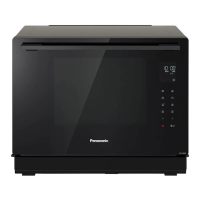
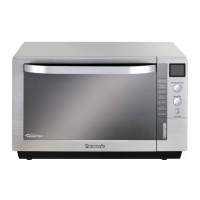
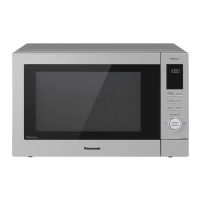
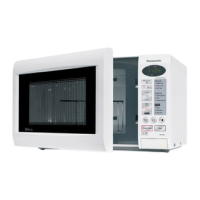


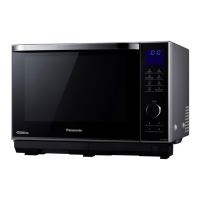
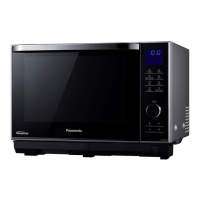

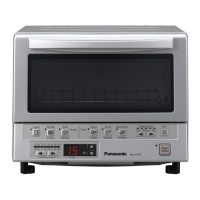
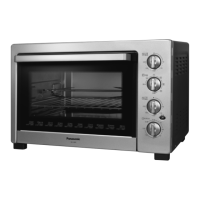
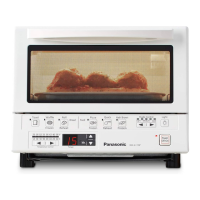
